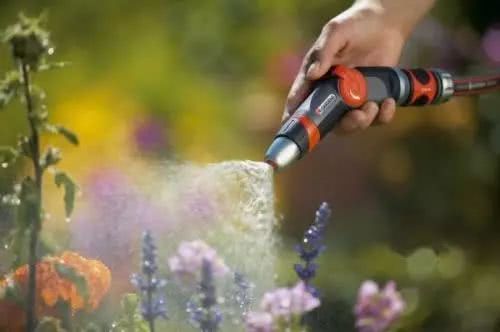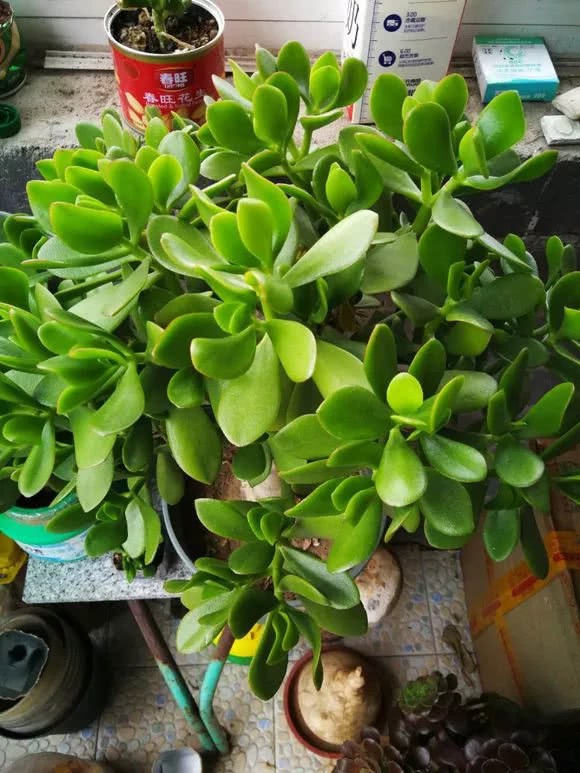How to judge whether a plant should be watered or not?

The most important skill of growing flowers is watering.
Watering is easy as well as easy, but it is really a knowledge to say it is difficult.
The amount and timing of watering should be based on the growth habits and growth environment of specific flowers and trees.
According to the taboo of water, it is generally said that a certain kind of plant likes wet or dry, afraid of waterlogging or afraid of drought.
For example, the most typical, cactus afraid of waterlogging, ten dead nine waterlogging, copper grass like water, watering can bring the dead back to life.
There are also many flowers, which are very sensitive to soil moisture. For example, as the old saying goes, "it takes three years to water orchids." that is to say, watering is the most important and difficult to master for orchids.
After summing up the experience of flower friends for a long time, we can get some true words about watering experience.
These watering rules are not as easy to operate as they seem, nor are they as absolute as they literally mean.
How on earth should we accurately judge and master it?
"dry and thoroughly poured"
Dryness and penetration is more likely to correct the common situation that watering is too frequent and watering is always "half-watered".
In addition to plants that like long-term wet water, frequent watering can easily affect root respiration and growth, resulting in rotten roots. This is especially true when there is poor ventilation.
For most plants who are always used to digging their roots deep into the soil to find water, the water generally comes from the basin, and the water can not reach below the roots for a long time, which is fatal to the plants.
So, how to judge whether it is dry or thoroughly watered?
In fact, dryness does not mean that all the media at the bottom of the basin are dry and short of water, because there is no water at all that really hurts the roots. We just have to judge that most of the basin soil is dry (or 20% humidity).
Different basin soil media have different water retention and drainage, the time of drying and the amount of water needed to be wet are different, coupled with the change of seasonal temperature and humidity, the judgment of dry and wet can not be generalized.
The judgment method, weighing the pot and listening to the sound are more commonly used: the weight of the pot soil is a manifestation of a lot of moisture in the soil, and it can be weighed out. At this time, you can hear a dull sound when you knock on the outer wall of the flowerpot.
The basin soil is light and makes a crisp sound, indicating that the basin soil is dry and it is time to water it.
There is also the method of testing disposable chopsticks by inserting disposable chopsticks into the basin soil and taking them out in a moment to see the degree of dryness and wetness of chopsticks to judge the situation of water consumption.
As long as the sound is clear, the weight of the basin becomes lighter, the chopsticks are relatively dry or only a small part of the bottom is moist, you can water them. At this time, even if it is "dry".
When watering, you can also listen to the sound, weigh the weight, and insert chopsticks to distinguish.
There are two points to pay attention to: first, leakage is not equal to thorough watering, because even if the basin soil is very dry, it may not have been watered thoroughly; second, do not water too much and stop when it is thoroughly watered.
In operation, watering should be slow at first, and the soil can be loosened before watering, so it can be easily watered through.
Secondly, you can choose to water with a quantitative mineral water bottle, just start to test with chopsticks, observe the changes of the branches and leaves of the plant before and after watering, come three or four times, you can find the amount of water the plant needs.
Master these points, and after watering pay attention to the ventilation environment, the combination of the two, everyone can sum up their own experience and intuition, this is the most important.
"see dry and wet"
It is required to be thoroughly watered once and when it is not yet dry.
Flowers that like to "see dry and wet" are usually more difficult to raise, because the amount of soil in the basin is not easy to grasp. They require that the soil be kept moist all the time, while firmly putting an end to stagnant water.
This kind of flowers are: orchids, azaleas, camellia, gardenia and so on, among which orchid watering is notoriously difficult to control.
For this kind of flower culture, pot soil medium is very important, there must be a high drainage in order to raise well.
As for the dry and wet judgment of the basin soil, the previous method can also be used, but watering usually needs to replenish water when it is three centimeters below the surface of the basin soil.
"dry and wet"
There is a difference between dry and dry. It means that the basin soil is kept dry for a period of time and then watered.
Usually, this watering method is used in drought-loving plant species, such as cactus, or in the dormant period or root damage period of wet-loving plants.
During the dormant period and the root damage period, the absorption and transport capacity of the root becomes worse, so it is necessary to water less, that is, the drying time of the basin soil should be relatively prolonged and then watered.
"better wet than dry" and "better dry than wet"
These two watering methods are easier to understand and operate. It usually refers to plants that are particularly wet-tolerant and avoid water shortage and plants that are especially dry, cold-resistant and afraid of water stains.
It is better to be wet than dry, for example, Dryopteris, copper money grass, water bamboo, water lilies and so on.
Better dry than wet, such as cactus and most succulent plants.
A few four-character mantras watered seem simple, but in practice they have become complicated because of plant growth habits, stages and specific growth environment.
Share more, sum up more experience, everyone can master their own watering treasure book.
If you also like growing flowers, follow us!
- Prev

Luo Hansong keeps its branches straight and straight in this way.
Luohan pine tree shape is beautiful, the four seasons green, often as a bonsai, elegant and simple shape, high ornamental value, will be cultivated into bonsai at home, bring a different kind of interest to the home, the following to introduce the conservation methods of Luohansong! Luo.
- Next

Unexpectedly, there are 10 kinds of Yushu who have seen 5 kinds of gods. Look at how many kinds do you have in your home?
Yushu is called thick-skinned in many places. Yushu, which has been around for decades, is very beautiful. Yushu has thick green leaves, vigorous and simple branches, a big tree style, made of bonsai jade carving bonsai, elegant, beautiful scenery, conservation phase.
Related
- Wuhan Hospital Iron Tree Blooming Result Was Instantly Frightened by the Gardener Master
- Which variety of camellia is the most fragrant and best? Which one do you like best?
- What is the small blue coat, the breeding methods and matters needing attention of the succulent plant
- Dormancy time and maintenance management of succulent plants during dormancy
- Minas succulent how to raise, Minas succulent plant pictures
- What are the varieties of winter succulent plants
- How to raise succulent plants in twelve rolls? let's take a look at some experience of breeding twelve rolls.
- Attention should be paid to water control for succulent plants during dormant period (winter and summer)
- Watering experience of twelve rolls of succulent plants
- Techniques for fertilizing succulent plants. An article will let you know how to fertilize succulent plants.

